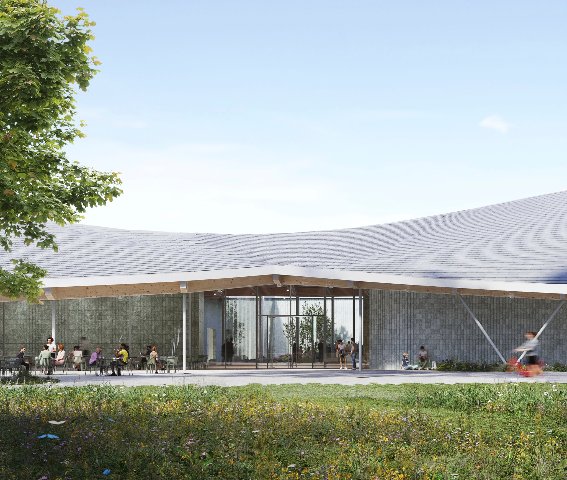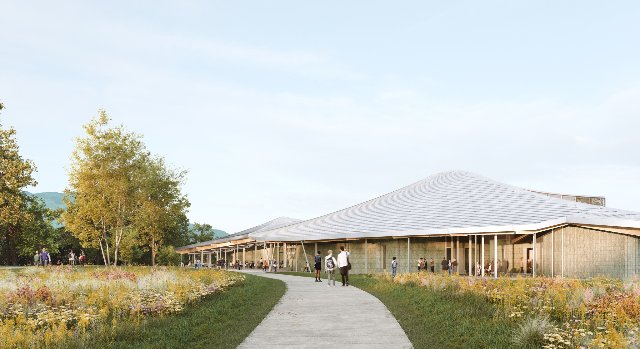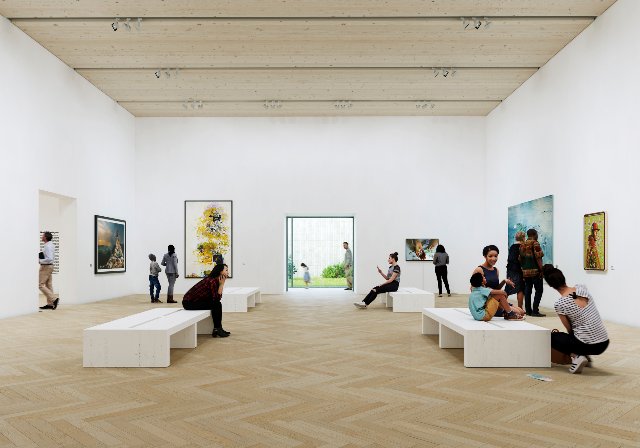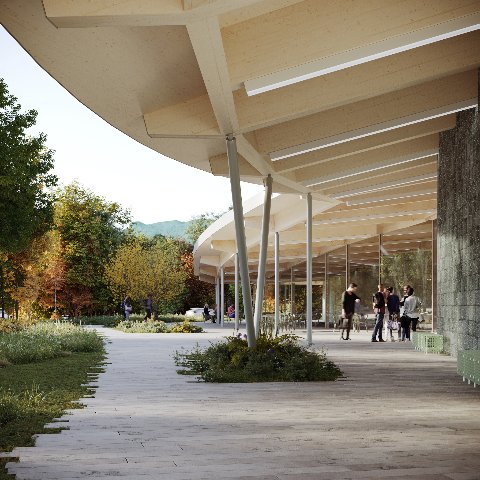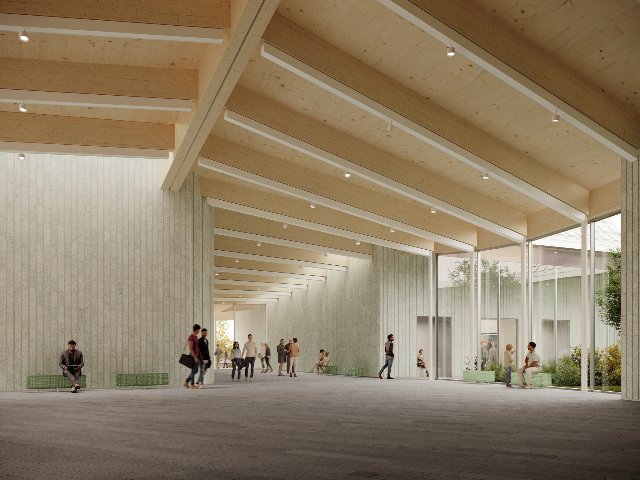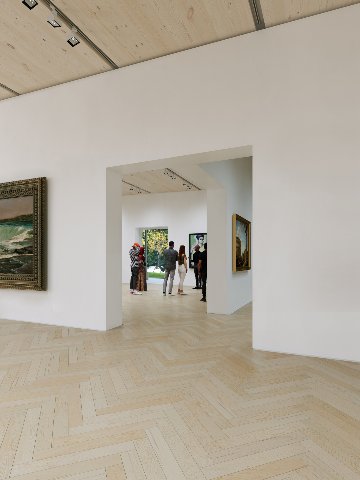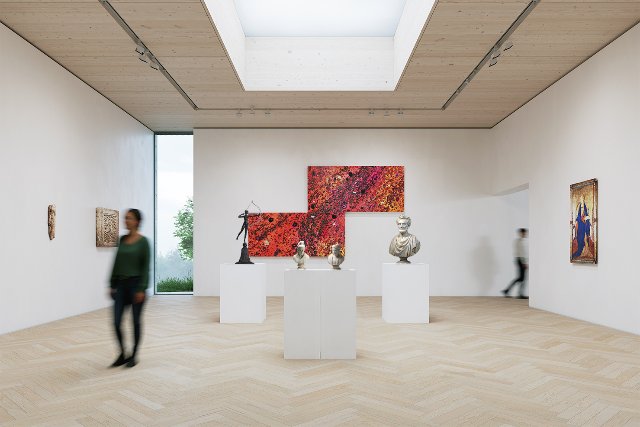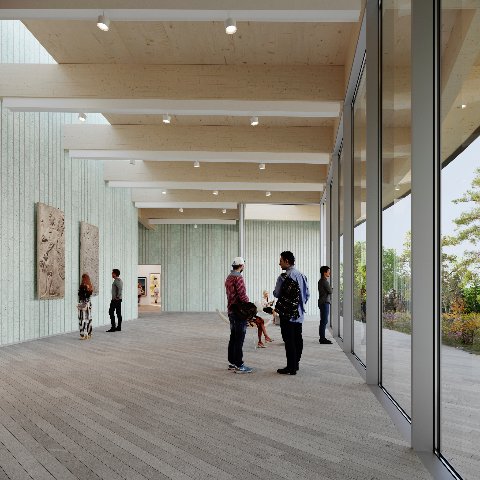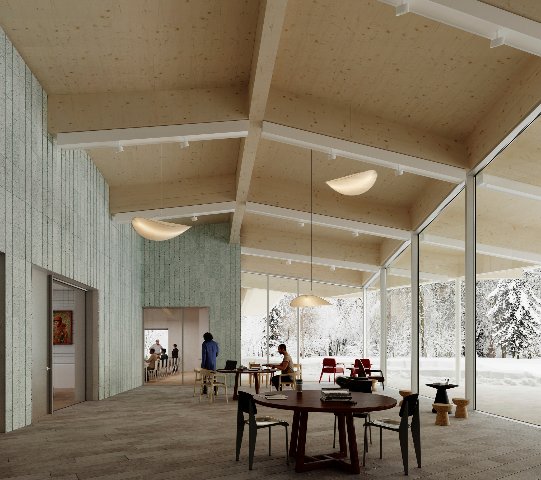Williams Collage Art Museum
Designs for Its Stand Alone Venue
By: WCMA - Mar 07, 2024
|
Today, Williams College unveiled the design for a new home for its campus art museum, one of the most distinguished in the United States. A primary teaching resource for the College across all disciplines and an essential partner of its renowned art history program, the Williams College Museum of Art holds and exhibits an expansive global collection of more than 15,000 works. Inaugurated in 1926, the museum serves as a creative catalyst for the College and the Berkshires with its innovative exhibitions and programs. Now, for the first time, the museum will have its own freestanding, purpose-built home. Designed by SO–IL, the internationally recognized Brooklyn-based firm led by Florian Idenburg and Jing Liu, the new Williams College Museum of Art is projected to open in 2027. Maud S. Mandel, President of Williams College, said, “Williams has a stellar legacy in the field of art history. At the center of that success has been our commitment to opening a world-class, global collection to engagement. The museum has been a place where people could come not just to view art, but to really get involved with it and in it–to think about the circumstances in which it is created, and the ways in which different artists see the world, and what those insights can mean for humanity as a whole. Some of the most fascinating examples have come from work with the collection by our classes in unexpected fields, such as chemistry or computer science or environmental studies. At the same time, and in the same space, the collection has been an important draw for visitors, a hub for discussion and culture and creativity for the Berkshires and beyond. The new building—designed to stand as a gateway to the heart of campus and Williamstown, and a tribute to the natural world in which we reside—will make it possible to realize and extend our vision for great arts engagement into a new century.” Pamela Franks, Class of 1956 Director of the Williams College Museum of Art, said, “I’m thrilled by how deeply and imaginatively SO–IL has responded to our goal of engaging the entire campus around art, while bringing the Williams College experience into dynamic interaction with the wider world and becoming a more visible, accessible presence among the outstanding cultural attractions in the Berkshires. The new WCMA prioritizes inspiring spaces to display and study the collection and will be a forward-looking architectural achievement that is simultaneously a welcoming and relaxed meeting place for the campus, the Williamstown community and our visitors from around the world. It will be a sustainable building in dialogue with the beautiful natural surroundings, where people can linger, converse, participate in wide-ranging programs, and enjoy art from ancient Assyrian reliefs to contemporary media at no cost of admission.” Jing Liu and Florian Idenburg, founding partners of SO–IL said: "Designing a college art museum is one of the most exciting tasks we as architects can imagine. Orchestrating synergies between the past, present, and future enables us to create a home where students, faculty, community, and collection converge. We believe space is as much a teacher as the programs it houses, so we are thrilled to partner with WCMA in designing a building in which different modes of art study and appreciation can intersect, coexist, and reinvent one another. Walls do not confine the concept of this museum, but rather the inviting gesture of an overarching roof that delineates spaces for these interactions to take place. Contributing to this beautiful landscape, we hope the building will become a welcoming beacon, situated sensitively between campus and the world beyond.” Overview of the Design Credit: Jeudi.Wang, courtesy SO–IL and the Williams College Museum of Art. From the central lobby (pictured left), two gallery clusters for temporary exhibitions and the permanent collection radiate toward the north. These galleries provide more than 15,000 square feet of display space, accounting for 35 percent of the net square footage of the building. Spaces for dynamic programming and community engagement greet visitors from the main south-facing entrance, with an auditorium, art studio space, and a café extending toward the southwest. An innovative hybrid gallery-classroom space dedicated to the museum’s signature Object Lab sits to the southeast. Reaching toward campus to the east, a study center of approximately 6,400 square feet includes dedicated areas for works on paper study, storage, two classrooms for object study, a digital humanities classroom, and a seminar room. A roof of aluminum shingles covers all five volumes of the museum with curves and peaks that engage with the ridgelines of the surrounding mountains. The roof’s broad overhang creates awnings and porches that surround the building, embracing visitors as they approach while providing temperature regulation to reduce energy use and enhance sustainability. A courtyard garden stands at the heart of the building, north of the central lobby between the two gallery arms, locating nature at the center of the building. Views of the landscape open from the central lobby toward the main entrances, located on the south and west sides of the building. Seating areas between galleries offer views of the landscape, as does the lounge unifying the research spaces and classrooms in the study center. The porosity of the design creates the sense that its architecture is embedded directly into the Berkshires landscape, an expression of the project’s rigorous emphasis on sustainability. With a focus on renewable materials and innovative climate control techniques, the building aims to require as little as 30 percent of the current baseline energy usage for art museums. The building's mass timber structure is exposed throughout the lobby and echoed by wood ceilings in the galleries. Carbon-conscious masonry in both textured and smooth surfaces will clad the outer walls of each pavilion, extending from the exterior façade to the interior gathering spaces and passageways. The roof's overhang will not only provide shade for the expanses of glass in the façade but also will be used for a rainwater retention system. Outside the building, bioretention basins will catch and treat rainwater, while a cistern beneath the parking lot will hold water back until the brook running north of the site can handle the run-off. The landscape around the building, designed by Reed Hilderbrand, will be renewed and reforested, with a flowering meadow and gardens featuring native plants. The main parking area, located north of the building, will be a “park-in-the-woods” experience built into an existing 30-foot drop-off in the topography. The museum will present an exhibition on the SO–IL design, opening in May 2024. About Williams College Museum of Art About SO–IL Diverse in origin, the SO–IL team speaks a dozen languages and is informed by global narratives and perspectives. With its ambitious private and public clients, the practice has completed projects in cities from Leon, Seoul, and Lisbon to its hometown of Brooklyn. Other work includes the design for the New York Frieze Art fair structure, a concept home for nomadic living in Milan that encourages an active awareness of life beyond routine, a museum on the University of California, Davis campus that cultivates an intentionally open-ended relationship between the visitor and the site, and the transformation of an industrial heritage site into a thriving cultural campus in Meisenthal, France. SO–IL’s work is in the collections of the Museum of Modern Art, the Guggenheim Museum, the Art Institute of Chicago, and the Benaki Museum. The firm has received numerous accolades, including the Emerging Voices award from the Architectural League, the Vilcek Award, and the Curbed Groundbreakers Award. In 2022, Jing and Florian were awarded the American Academy for Arts and Letters Award in Architecture and were named United States Artist Fellows.
About the Williams College Museum of Art Building Project The project targets LBC Core 4.0 certification, which requires ambitious sustainability measures. These include a fully mass timber superstructure, all electric power, efficient air source heat pump systems, rainwater retention and reuse, rigorous stormwater capture through mechanical and natural means, and ecological restoration of the project site. The building design is characterized by independent pavilions of the museum program that are organized around a central gathering space and courtyard, covered by an expansive and flowing roof. Building size: 76,800 GSF Design Architect: SO–IL SO–IL Project Team
|


